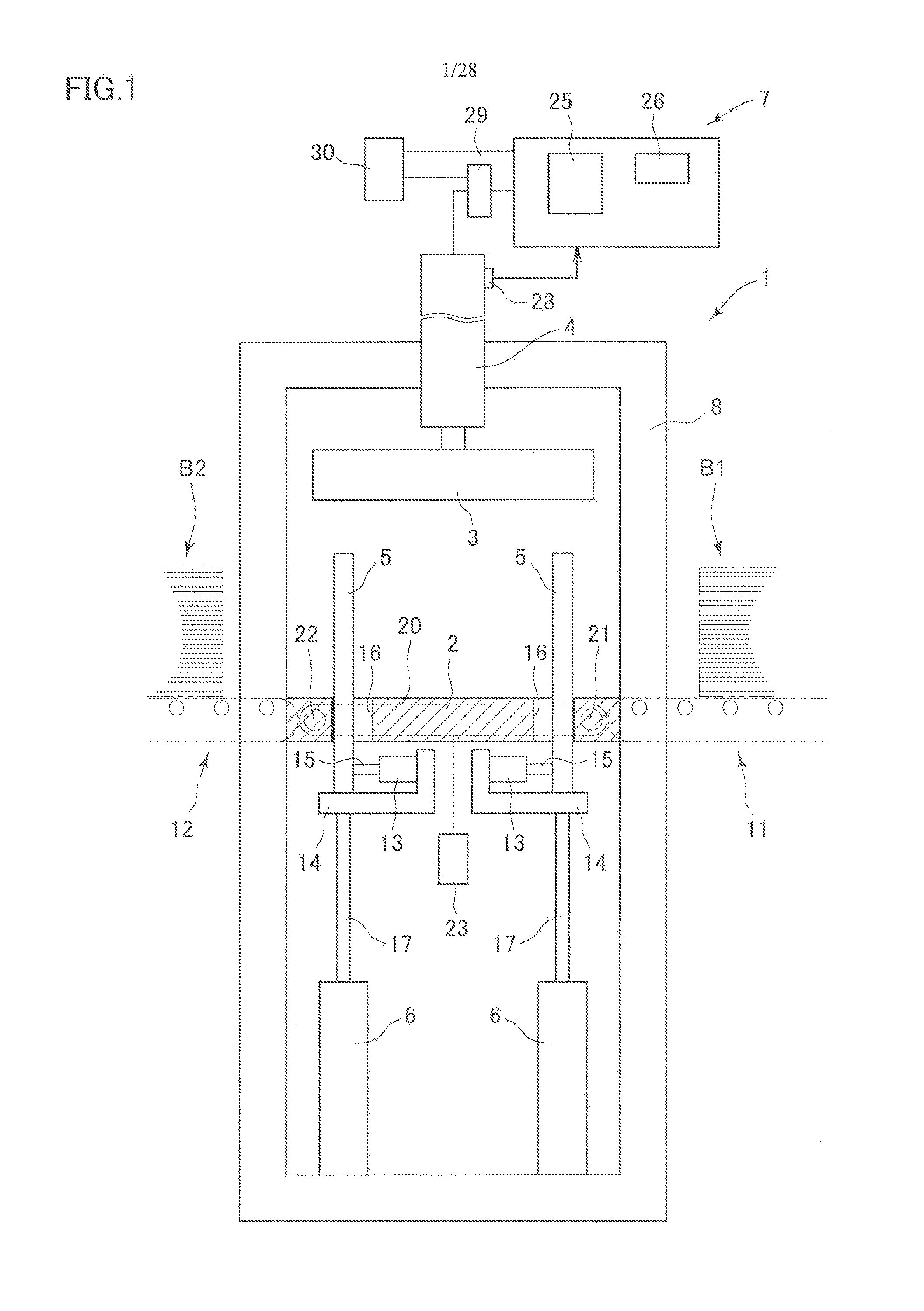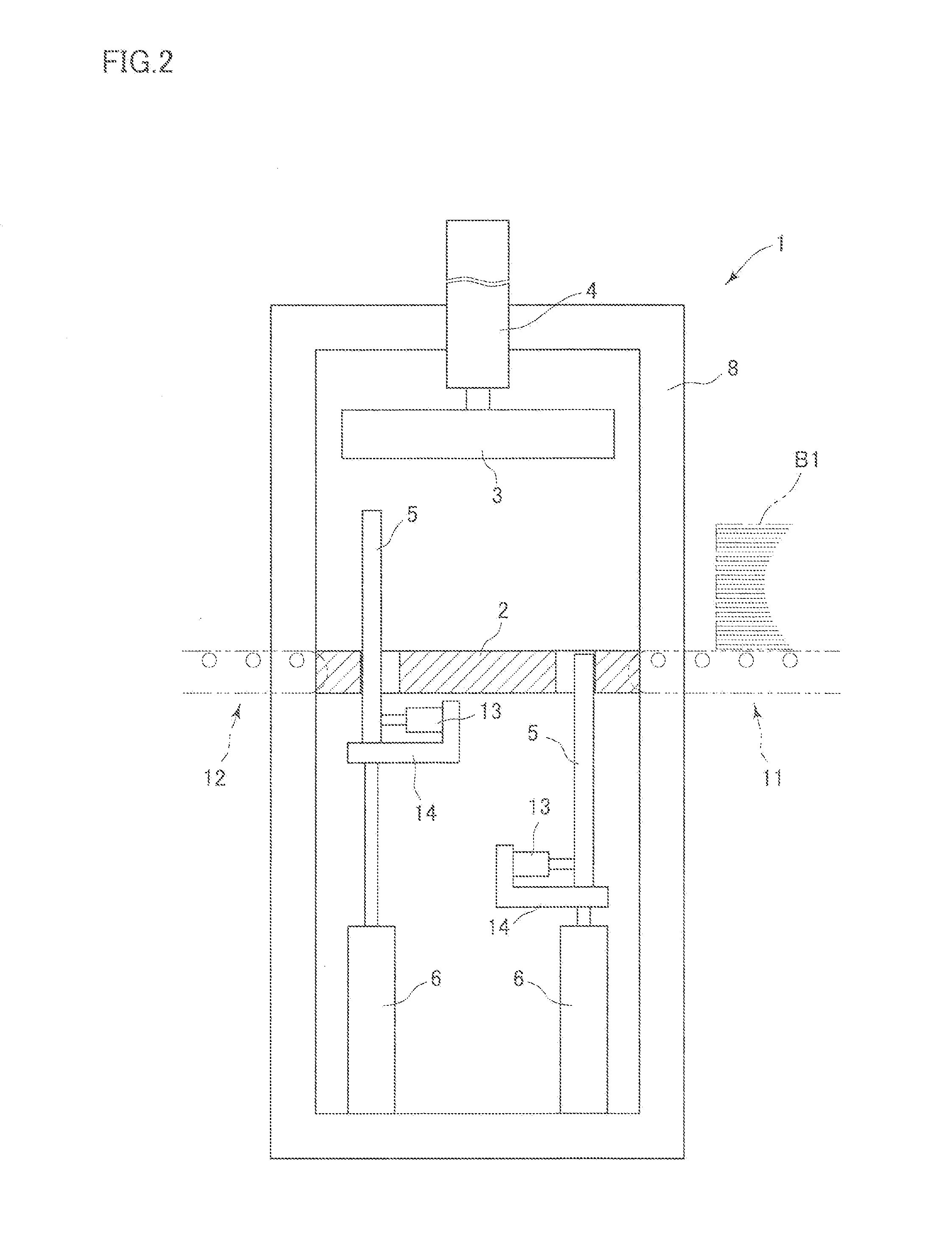Dewatering Method for Correcting Water Content of Green Veneer for Plywood and Apparatus for Dewatering the Green Veneer
a green veneer and water content technology, applied in the direction of veneer presses, lamination ancillary operations, applications, etc., can solve the problems of large time consumption of the apparatus for dewatering the green veneer one by one, difficult to achieve the effect of equal drying of the green veneer, and high labor intensity
- Summary
- Abstract
- Description
- Claims
- Application Information
AI Technical Summary
Benefits of technology
Problems solved by technology
Method used
Image
Examples
Embodiment Construction
[0074]An exemplary embodiment of the invention is described referring to examples illustrated in the accompanied drawings. First, a dewatering apparatus for correcting water contents suitably used in a method according to the invention is described. Then, examples of the method according to the invention are described in a manner that corresponds to the description of operations of the apparatuses. FIG. 1 illustrates a green veneer dewatering apparatus 1 adapted to vertically apply a pressing force and thereby compress a veneer laminate (green veneer laminate) composed of a large number of vertically laminated green veneers for plywood to dewater the veneer laminate for reduction of a water content of the veneer laminate. The green veneer dewatering apparatus 1 has a support platen 2 supporting the veneer laminate, a press platen 3 provided in an upper section of the support platen 2 and serving as a pressing member movable toward and away from the support platen 2, a pressing cylin...
PUM
| Property | Measurement | Unit |
|---|---|---|
| water contents | aaaaa | aaaaa |
| water contents | aaaaa | aaaaa |
| water content | aaaaa | aaaaa |
Abstract
Description
Claims
Application Information
 Login to View More
Login to View More - R&D
- Intellectual Property
- Life Sciences
- Materials
- Tech Scout
- Unparalleled Data Quality
- Higher Quality Content
- 60% Fewer Hallucinations
Browse by: Latest US Patents, China's latest patents, Technical Efficacy Thesaurus, Application Domain, Technology Topic, Popular Technical Reports.
© 2025 PatSnap. All rights reserved.Legal|Privacy policy|Modern Slavery Act Transparency Statement|Sitemap|About US| Contact US: help@patsnap.com



